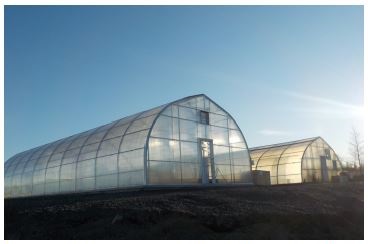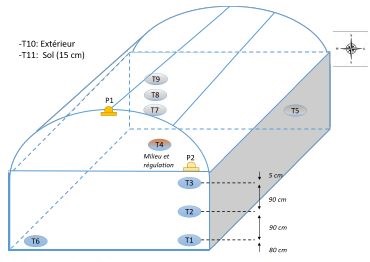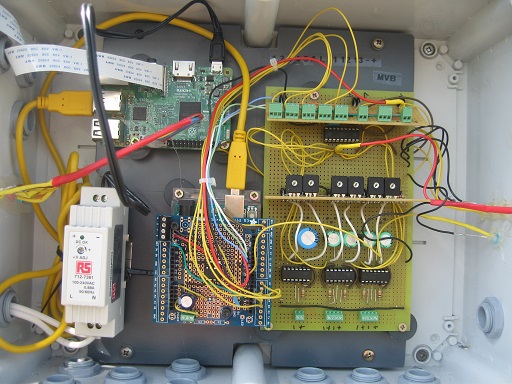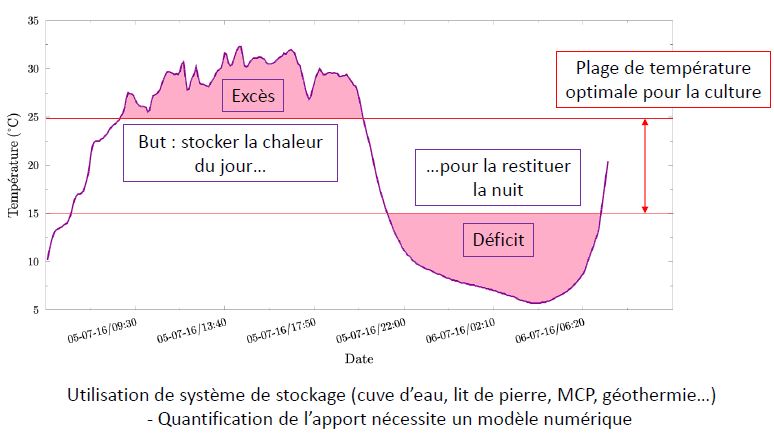Project co-led by Didier Haillot and Daniel Rousse
Living in an isolated region inaccessible by overland routes, the Inuit of Canada’s northern territory has been facing major adaptation challenges over recent decades, particularly in terms of energy supply. These off-grid communities are extremely dependent on petroleum products for heat (by burning furnace oil) and electricity (by using diesel generators). The installation of renewable energy technology offers an alternative for producing ‘clean’ energy and thus reducing the need for fossil fuels. Since 2016, the SEQINEQ project team has been exploring methods of storing heat in greenhouses in Kuujjuaq with the aim of limiting the impact of extreme temperature differences on cultivated plants during their growth period.
Interview with Didier Haillot, co-leader of the SEQINEQ research project
- How id the project come about?

Through the Nunavik Human–Environment Observatory and interactions with different researchers involved with the lab, I had the opportunity of meeting the group working on greenhouse projects in the Nunavik region (the ‘greenhouse’ research project) as well as local stakeholders working on these projects, particularly in Kuujjuaq. They shared some of the energy problems confronting the greenhouse projects: for example, the fact that in the middle of summer a very cold night can result in a sudden and dramatic drop in temperature. So we began to study the application of heat-storage systems for the greenhouses. Basically, we are exploring potential methods of storing heat in materials with high thermal inertia during the day. This system would then allow the stored heat to be released when the temperature falls, maintaining a constant temperature without using additional electricity. This would have a beneficial effect on plant growth.
- Which communities are concerned? Who are the stakeholders?
Currently, the study is focusing on the village of Kuujjuaq, where two greenhouses are already in operation. The team is working closely with the greenhouse committee of Kuujjuaq in order to find the most adapted solution for local technical issues and the community’s needs. The Nunavik Research Centre, part of the Resource Development Department of the Makivik Corporation, under the direction of Ellen Avard, was also an integral part of the project.
- Who are the team members?
- Didier Haillot: co-leader of the SEQINEQ project, professor at the French National School of Industrial Technology Engineering (ENSGTI) and a researcher at the Thermal Energy and Processes lab (TEP). Field of specialization: solar energy and heat storage
- Paul Pichet: doctoral student at the Thermal Energy and Processes lab (TEP). Thesis subject: energy optimization of greenhouses in polar regions
- Daniel Rousse: co-leader of the SEQINEQ project, professor at Montreal’s École de Technologie Supérieure (ÉTS) where he is the director of Groupe T3E (energy and energy efficiency technologies) and director of the Master’s in renewable energy and energy efficiency
- Cédric Arrabie: electronics design engineer at the French National School of Industrial Technology Engineering (ENSGTI) and the Thermal Energy and Processes lab (TEP)
- Stéphane Gibout: lecturer at the French National School of Industrial Technology Engineering (ENSGTI)
- Xavier PY: professor at the Université de Perpignan and researcher at the Processes, Materials, and Solar Energy lab (PROMES) of the French National Centre for Scientific Research (CNRS)
- What is your approach? How are you working with the local community?
The first part of the project in 2016 and 2017 involved installing 13 sensors in order to produce a map of the temperature, humidity and solar radiation flux relative to the Kuujjuaq greenhouse as well as a thermal imaging camera to identify the buildings that were the least well-insulated. This initial visit also had the goal of meeting the local energy stakeholders, principally the municipality of Kuujjuaq, the Kativik regional administration and the personnel of HydroQuébec. The sensors installed in the greenhouse enabled a significant amount of solar and thermal data to be collected and analyzed. We are currently developing a new modular instrumentation system that will allow data to be collected online. We are also working on the implementation of a thermal model that will be used as a design tool when upgrading the Kuujjuaq greenhouse or setting up greenhouses in other villages.


Position of the sensors in the greenhouse and an example of a sensor
- Have there been any challenges?
The terrain in Nunavik can pose challenges. For example, in 2016 the pyranometers that we had ordered in France were held for 10 days at customs in Toronto.
- What are the results so far?
An analysis of solar irradiance data revealed the high solar energy potential in Kuujjuaq, chiefly because the days in spring and summer are relatively long – even longer than in the south of France. The data regarding greenhouse temperatures showed a large day-night temperature range with an average difference of 25 °C. This difference could be decreased considerably by installing heat storage systems based on water tanks, stone beds, phase-change materials or geothermal energy.
Temperature analysis of the Kuujuaq greenhouse
In fact, the SEQINEQ project is the thermal engineering part of a broader gardening project in Nunavik that encompasses nutrition, ethnobotany, social acceptance, etc. (the NIQILIRINIQ project). We produced a scientific article about this project with our colleagues in the Nunavik Human–Environment Observatory.
- · Links to websites and publications created for this project

